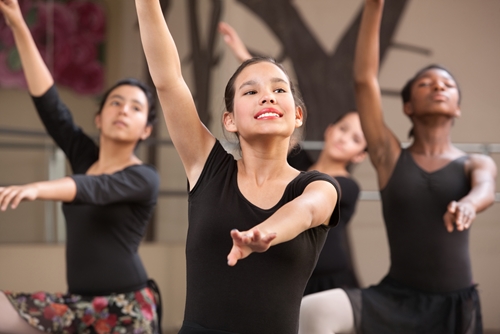Even if your dancers can execute their routine flawlessly, judges and audience members might still be able to tell that the performers are stressed, confused or frightened. How’s that? Through facial expressions.
Many communication experts believe that the messages we send to other people come predominantly from nonverbal cues. That’s why performers need to spend time working on their facial expressions, which can fundamentally affect the quality of their performance. Here are some dance teacher tips for teaching facial expressions to your budding young artists, as well as a few exercises that may aid your lessons.
Understanding the Importance
After you and your dancers spend hours and hours perfecting a performance, the last thing you want is for the piece to feel uncomfortable because of awkward facial expressions. Dance Spirit magazine explained that genuine nonverbal cues can add a level of authenticity to a performance and elevate it from good to great.
However, sometimes the “right” facial expressions aren’t the ones that come naturally. Many times young dancers are taught to simply put on a big smile. This may be endearing in beginner classes, but it certainly won’t cut it at more advanced competition levels.
“Facial expressions need to come from a real human place instead of being painted on,” Shelly Masenoir, a judge for the StarQuest and Applause Talent Competition, explained to Dance Spirit magazine. “Facial expression is not a costume that you put on. It’s a part of you and how you feel.”
It’s important for students to realize that their nonverbal communication doesn’t just come from their smiles. Dance Advantage noted that mouths, jaws and eyes can all show authentic emotion or a lack of connection. Your students need to exercise the same level of control of their facial expressions while dancing that they do over the rest of their bodies.
How to Practice and Improve Facial Expressions
When it comes time to practice those on-command “genuine” smiles, gather your class in front of a mirror. Demonstrate what judges will consider to be a false smile – lots of teeth and strained muscles – and then have your students practice more natural expressions.
The Rockettes blog recommended having dancers relax their jaws and tongues. If your students are particularly stiff, you might get them to loosen up by making a few silly faces.
Once everyone has relaxed their facial muscles, discuss ways to engage the audience with their eyes. Have them raise their eyebrows slightly, as if they were talking about something interesting. Instruct students to breathe in through their noses and out through their mouths. This will help them to keep a more natural smile with an open mouth.
Depending on the nature of the performance, you may want to tone down the facial expressions or give them a little more pizzazz. As with any dance skill, it will probably take some time and practice to get body language to where it needs to be.
Take a few minutes at the start or end of class to practice those facial expressions and make sure to give your students lots of honest feedback.
After a few lessons on facial expressions, you might want to consider taping a performance for your dancers to review. Watch the video together as a class and give constructive criticism on how the students could improve their nonverbal communication.
Discuss whether the dancers’ body language is appropriate for the mood and tone of the piece and brainstorm ways for the class to improve facial expressions together.



